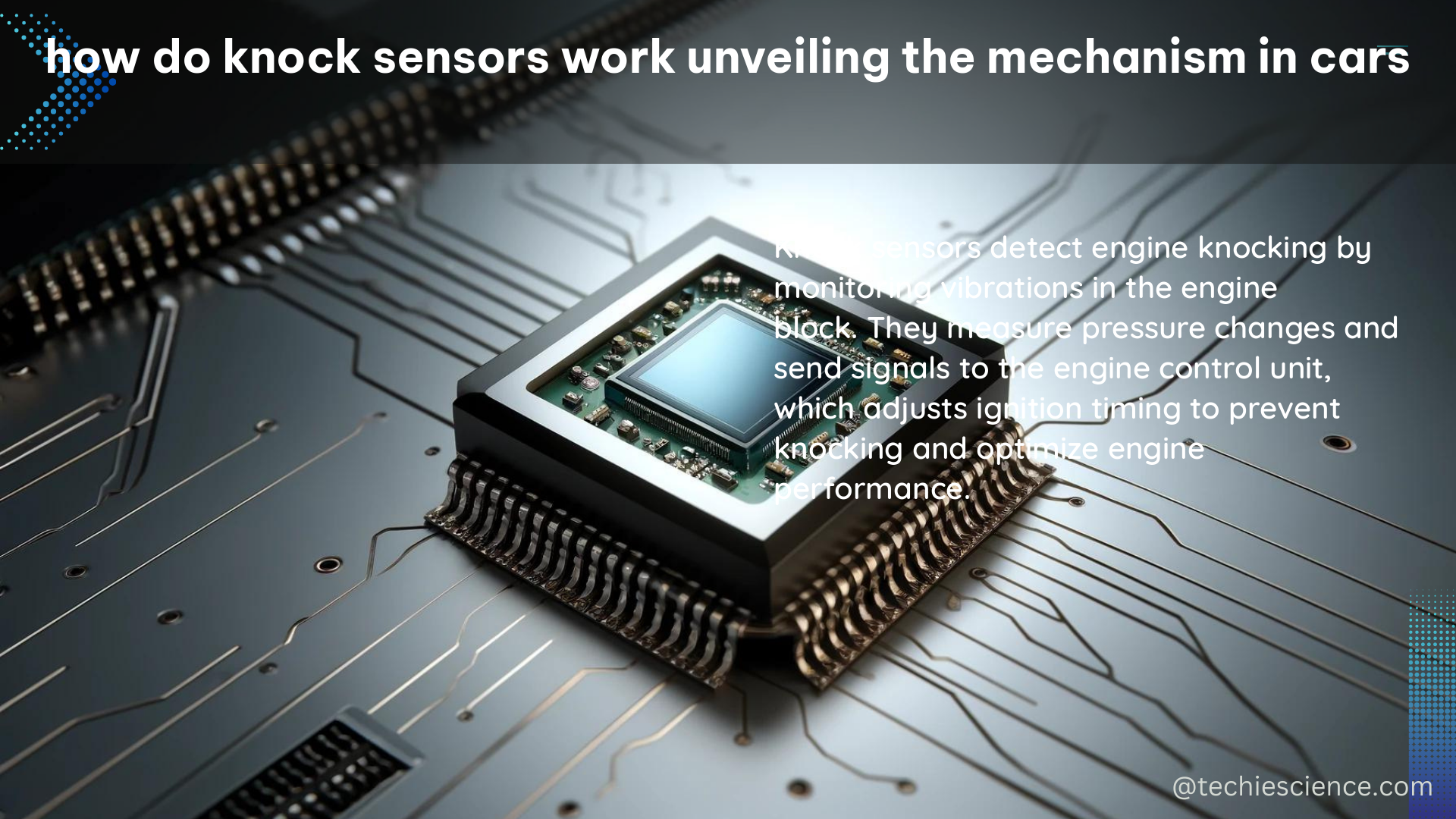Knock sensors, also known as knock detectors, are crucial components in modern automotive engines. They are designed to detect engine knock, a condition that can cause significant engine damage if left unchecked. Knock sensors work by converting the vibrations and timings of engine explosions into electrical signals that are sent to the Engine Control Unit (ECU). The ECU uses these signals to adjust the engine’s ignition timing and fuel-air mixture to prevent engine knock.
Understanding the Knock Sensor Mechanism
The knock sensor contains a stack of paper-thin piezoelectric crystals that create voltage when compressed. The engine knock compresses the crystals in the sensor to different degrees, which then sends different voltage signals to the ECU. The ECU can then make any required changes to the engine firing to keep it running smoothly and efficiently.
Piezoelectric Crystals in Knock Sensors
The key component of a knock sensor is the piezoelectric crystal stack. These crystals are made of materials like quartz, Rochelle salt, or lead zirconate titanate (PZT). When the crystals are compressed, they generate a small electrical voltage. This voltage is proportional to the amount of compression, allowing the sensor to detect the intensity of the engine knock.
| Crystal Material | Voltage Generation |
|---|---|
| Quartz | 2.3 × 10^-12 V/Pa |
| Rochelle Salt | 3.1 × 10^-10 V/Pa |
| Lead Zirconate Titanate (PZT) | 4.5 × 10^-10 V/Pa |
The voltage signals from the piezoelectric crystals are then sent to the ECU, which can analyze the intensity and timing of the knock events.
Knock Sensor Placement and Quantity
The number of knock sensors in an engine depends on the number of cylinders and engine technology. A four-cylinder engine typically has one knock sensor, while a six-cylinder engine would need a knock sensor for each bank of three cylinders. This is generally the minimum, but manufacturers can choose to add more sensors for better knock detection.
The knock sensors are typically mounted on the engine block, close to the cylinders, to accurately detect the vibrations and pressure waves generated by engine knock. The placement of the sensors is crucial, as it ensures they can effectively capture the knock events.
Knock Sensor Failure and Diagnosis

A faulty knock sensor can severely impact engine performance, resulting in reduced engine performance, severely reduced fuel economy, poor acceleration, power loss and ‘limp home’ mode, and knocking or pinking noise from the engine. If the sensor can’t tell the engine there’s an issue with the engine firing, the continued misfiring of the engine can severely hamper vehicle performance and eventually cause significant damage.
Diagnosing Knock Sensor Issues
To test a knock sensor for a signal, an oscilloscope can be used. Getting a quick, accurate reading from the oscilloscope will help determine what parts need to be repaired or replaced. The oscilloscope can measure the voltage output of the knock sensor, which should vary in response to engine knock events.
Here are some key steps to diagnose a knock sensor:
- Connect the oscilloscope to the knock sensor signal wire.
- Start the engine and observe the oscilloscope display.
- Look for voltage spikes that correspond to engine knock events.
- If the sensor is not producing any voltage spikes, the sensor may be faulty and need replacement.
- Compare the sensor’s voltage output to the manufacturer’s specifications to ensure it is within the acceptable range.
By understanding the mechanism and diagnostic process for knock sensors, you can effectively troubleshoot and maintain your vehicle’s engine performance.
References
- What is a Knock Sensor and How Does it Work?
- Knock Sensor Troubleshooting
- Car Knock Sensor Troubleshooting
- How Knock Sensors Work
- Ultimate Guide to Understanding How Knock Sensor Works

The lambdageeks.com Core SME Team is a group of experienced subject matter experts from diverse scientific and technical fields including Physics, Chemistry, Technology,Electronics & Electrical Engineering, Automotive, Mechanical Engineering. Our team collaborates to create high-quality, well-researched articles on a wide range of science and technology topics for the lambdageeks.com website.
All Our Senior SME are having more than 7 Years of experience in the respective fields . They are either Working Industry Professionals or assocaited With different Universities. Refer Our Authors Page to get to know About our Core SMEs.